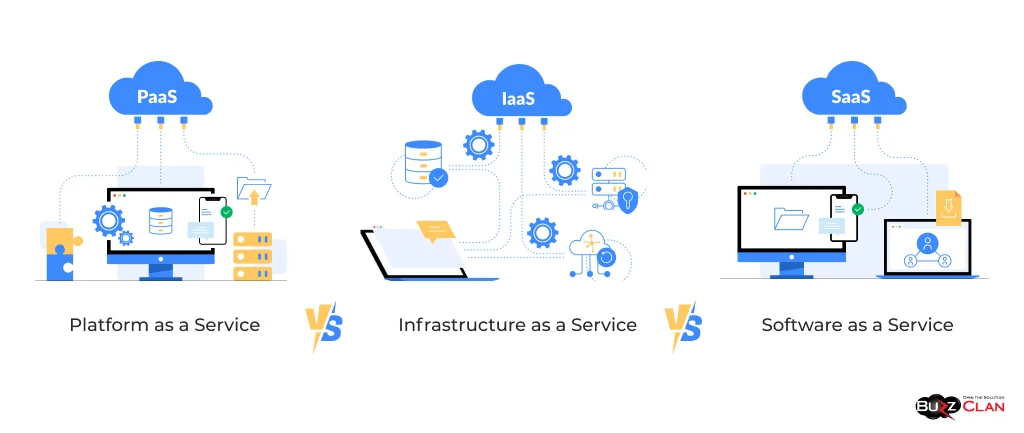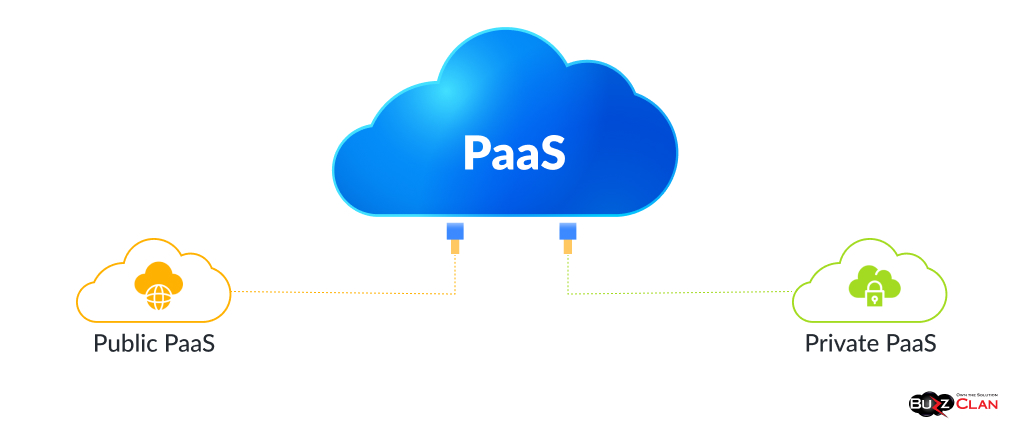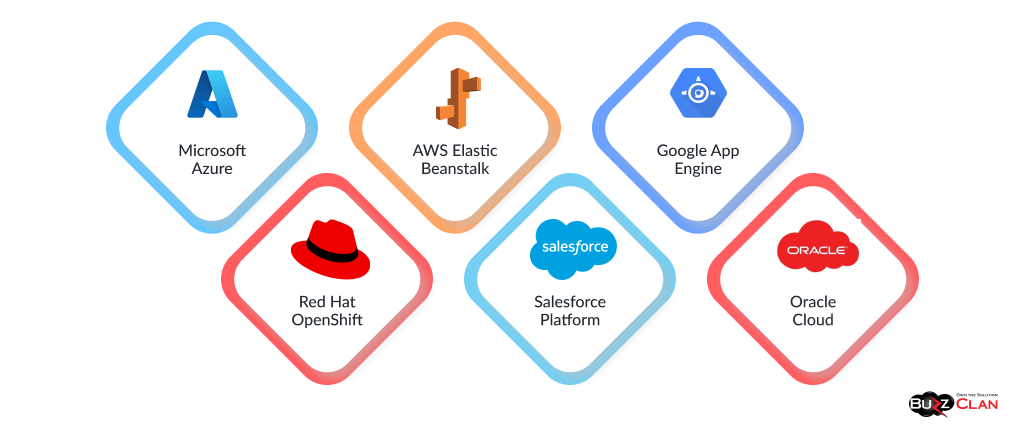What is Platform-as-a-Service (PaaS)?
Harash Jindal
Feb 9, 2024
Platform as a Service (PaaS) has emerged as a critical cloud computing service model, providing a simplified way for developers to build, deploy, and manage cloud-based applications. This guide will explore what PaaS entails, its benefits, leading providers, use cases, and overall role in modern application development.
Introduction to Platform as a Service (PaaS)
Platform as a Service refers to cloud computing services that supply a complete platform to develop, run, and manage applications without building the underlying infrastructure. PaaS sits atop fundamental Infrastructure as a Service (IaaS) resources such as servers, storage, and networking, integrating them into a seamless application development and delivery framework.
A PaaS provider hosts, administers, and maintains the hardware and software required to deploy applications over the cloud. This allows development teams to focus solely on writing application logic and code. PaaS also automates operational aspects like scaling and updates. Users access the development environment and deploy apps over the internet.
PaaS enables faster software development and deployment than traditional on-premise platforms by utilizing pre-configured and optimized environments. It is instrumental in powering modern rapid application release practices.
What is Platform as a Service?
Platform as a Service removes the need for organizations to configure underlying infrastructure and middleware necessary to design, build, test, deploy, and update cloud-based software applications. The PaaS vendor provides all hardware and software infrastructure, including servers, operating systems, storage, networks, databases, governance, and security.
Developers interact with a web-based service, console, or IDE containing tools and APIs to quickly code, test iterations, and deploy applications without worrying about procuring and maintaining infrastructure. PaaS abstracts all platform and operational aspects, allowing coders to focus on writing application logic.
Further Reading
PaaS offerings often include capabilities like:
- Application hosting configurations
- Development tools and SDKs
- Database management, including schema definition
- Business intelligence, reporting and analytics
- Built-in scalability and high availability
- Access and identity management
- Team collaboration abilities
- API gateway for integration capabilities
- Continuous integration and delivery (CI/CD) automation
PaaS vs. IaaS vs. SaaS

Comparing PaaS vs. IaaS vs SaaS helps determine the optimal service model for a specific workload:
- IaaS provides fundamental building blocks, including servers, storage, networking, and operating systems. Maximum flexibility but requires maintenance.
- PaaS offers a simplified, managed platform optimized to develop, deploy, and run cloud apps without infrastructure burdens.
- SaaS delivers complete turnkey cloud applications that provide capabilities to end users—no infrastructure or platform management is needed.
PaaS sits in the middle, sacrificing some infrastructure control to simplify cloud application delivery. SaaS provides the most complete solution, while IaaS offers the most granular infrastructure control.
Benefits of Platform as a Service
There are numerous advantages PaaS confers:
- Increased Productivity - By automating infrastructure management, PaaS allows developers to focus solely on writing application code and business logic. Rapid iteration improves output.
- Speed - Pre-configured environments, templates, and automation accelerate the development and deployment. DevOps practices are streamlined.
- Scalability - PaaS provides built-in horizontal and vertical scaling capabilities to accommodate spikes in application traffic and usage without downtime automatically.
- Reliability - Platform redundancy and failover mechanisms deliver high service uptime and availability. Disaster recovery is simplified.
- Efficiency - Teams avoid procurement and maintenance burdens associated with on-premise hardware and software systems. Cloud economies free up internal resources.
- Cost Savings - Pay-as-you-go model without upfront infrastructure investment. Scales down during periods of low usage—no need to overprovision capacity.
- Advanced Capabilities - Rapid access to cutting-edge services like AI, containers, serverless computing, blockchain, and IoT through integration APIs and SDKs.
Types of Platform as a Service

There are two primary PaaS deployment models:
- Public PaaS
Public PaaS leverages cloud infrastructure shared between multiple organizations or tenants. The PaaS platform is hosted in data centers operated by third-party public cloud providers such as AWS, Microsoft Azure, Google Cloud, IBM Cloud, and Salesforce.
Public PaaS offers the most flexibility and scalability to accommodate spiky traffic. It allows organizations to get started quickly without upfront investment. However, public PaaS inherits underlying IaaS considerations around data security and sovereignty.
- Private PaaS
Private PaaS provides dedicated single-tenant PaaS platforms hosted internally or by a third-party provider. This allows greater control over data security and compliance. Private PaaS can be built on-premise infrastructure or hosted on dedicated IaaS capacity.
The downside of private PaaS is higher costs and less flexibility. But for regulated industries like healthcare and financial services with stringent security and control requirements, private PaaS may be the ideal approach.
PaaS Components and Capabilities
PaaS platforms offer a wide array of integrated capabilities:
- Application Hosting
PaaS provides configurable application hosting options optimized for scale, security, and high availability. Developers can set up hosting environments tailored to application architecture, stack requirements, and usage scenarios.
- Development Tools
PaaS includes IDEs, SDKs, containers, templates, and other tools to streamline coding workflows. Support for leading programming languages and frameworks accelerates development. APIs and event triggers simplify integrating capabilities.
- Database Services
Fully managed database services eliminate the need to configure and maintain database servers. Scalable cloud database options include SQL, NoSQL, in-memory, graph, and time series databases.
- Analytics and Reporting
Embedded data analytics tools allow gleaning insights from application and usage data. Customizable dashboards can be created to monitor key metrics and logs in real time. Integrated business intelligence generates reports.
- Collaboration Platform
Team communication and ticketing abilities improve productivity and visibility. Source code control integrates with the application lifecycle. Users can manage tasks, track bugs, maintain documentation, and share knowledge.
- Security and Compliance
Robust identity and access controls, data encryption, vulnerability testing, audit controls, and compliance certification support security and regulatory requirements.
- API Gateway
An API gateway provides a unified interface to access backend services, implement cross-cutting concerns like security, manage APIs, and aggregate and transform data from disparate systems.
- CI/CD Automation
Integrated continuous integration / continuous delivery (CI/CD) pipelines automate building, testing, and deployment processes. This accelerates release cycles and improves quality.
PaaS Use Cases for Developers
PaaS delivers the most value for these development scenarios:
- Web/Mobile Applications - Build sophisticated web and mobile apps with integrated cloud services for storage, messaging, push notifications, usage analytics, maps, machine learning, etc.
- APIs - Create, run, and manage APIs using auto-scaling API gateways. Integrate APIs securely and reliably.
- Microservices - Develop and deploy microservices architectures with container orchestration, service mesh, and serverless components.
- IoT Applications - Ingest, process, and analyze high volumes of IoT data from connected devices using managed message queues, data lakes, and analytics.
- AI/ML - Harness pre-built AI services using simple APIs for image analysis, natural language processing, predictions, and more.
- Real-Time Big Data - Leverage fully managed big data services like data warehouses, lakes and streaming analytics.
Leading PaaS Providers

Major PaaS vendors include:
- AWS Elastic Beanstalk - Deploy scalable web apps and services using languages like Java, .NET, PHP, Node.js, Python, and Ruby. Integrates with other AWS services.
- Microsoft Azure - Wide breadth of application services deeply integrated with other Microsoft cloud offerings. Strong enterprise focus.
- Google App Engine - Fully managed serverless platform well suited for web applications, mobile backends, and IoT solutions.
- Salesforce Platform - Tightly integrated PaaS optimized for rapidly developing and deploying business applications - standalone and extensions to Salesforce SaaS.
- Red Hat OpenShift is an open-source Kubernetes-based container application platform with robust support and integrations.
- Oracle Cloud - Rapidly growing Oracle PaaS option for delivering enterprise applications using Oracle's integrated SaaS and IaaS capabilities.
Unique PaaS offerings are also tailored for particular use cases, verticals, and developer communities.
Implementation Tips for PaaS
Best practices for leveraging PaaS effectively:
- Audit application portfolios and target workloads that can benefit from cloud delivery models. Prioritize migrating monolithic and on-premise apps first.
- Evaluate PaaS vendor capabilities, including language and framework support, scalability needs, security controls, developer experience, reliability, and commercial terms.
- Integrate PaaS with existing developer tools like IDEs, version control systems, code repositories, monitoring systems, and organizational identity management.
- Modernize application architecture and designs for cloud-native patterns leveraging microservices, containers, service mesh, serverless components, and declarative infrastructure.
- Secure access to PaaS resources using role-based access control, credential management services, and secure connections. Implement strong authentication and authorization.
- Continuously monitor application and infrastructure logs, metrics, costs, utilization patterns, dependencies, and platform updates to maintain availability and optimize spending.
The Evolution of Platform as a Service
PaaS originated around the late 2000s as public cloud infrastructure matured to a point where providers could offer application development and delivery frameworks leveraging cloud servers, storage, and networking. Early examples include Force.com, Google App Engine, and AWS Elastic Beanstalk.
The evolution of modern microservices architecture, containers, Kubernetes, and service mesh has allowed PaaS to support cloud-native application development. Serverless computing has enabled event-driven architectures. Growing adoption of DevOps practices relies on CI/CD automation from PaaS.
Key PaaS trends involve multi-cloud orchestration, increased platform interoperability and federation, edge computing integration, and low-code solutions to expand developer personas. PaaS will continue gaining strategic importance as more enterprises transition to the cloud.
Conclusion
Platform as a Service aims to simplify cloud application development by abstracting operational concerns like infrastructure, middleware, runtimes, data, and networking. PaaS providers deliver fully managed platforms that reduce complexity and costs while improving developer productivity.
PaaS has become indispensable for modern agile software practices - empowering developers to rapidly build, iterate on, and deploy scalable, reliable, cloud-native applications. PaaS unlocks digital transformation for tech and business teams across the enterprise when leveraged effectively.
FAQs

Get In Touch
